Verdenskongres for arkitekter – mod en bæredygtig fremtid
Den længe ventede verdenskongres UIA er i gang.
02.07.2023
Den længe ventede verdenskongres UIA er i gang.
02.07.2023
Den længe ventede Verdenskongres for Arkitekter kan opleves i København fra den 2. til den 6. juli. Kongressen samler omkring 6000 arkitekter fra hele verden og udforsker arkitekturens potentiale til at skabe en mere bæredygtig fremtid.
Arkitektskolen Aarhus har som founding partner deltaget aktivt i tilrettelæggelsen af UIA kongressen. Rektor Torben Nielsen sidder i bestyrelsen, og skolen er bredt repræsenteret hele ugen med forskere og studerende i debatter, paneler og udstillinger.
Det omfattende program omfatter keynote-dialoger, videnskabelige præsentationer, Next Gen-sessioner, workshops, udstillinger, politiske samtaler men lige så vigtigt en række sociale arrangementer og side events – blandt andet 15 bæredygtige signatur-pavilloner rundt omkring i København. Læs mere nedenfor om de mange forskningsbidrag og Next Gen sessioner, Arkitektskolen Aarhus deltager i.
Med overskriften “Sustainable Futures – Leave No One Behind” stiller kongressen skarpt på FN’s Verdensmål for bæredygtig udvikling og skaber en unik platform til at dele viden og skabe relationer og forbindelser. Arkitekter og branchefagfolk vil få mulighed for at interagere, udveksle idéer og opbygge samarbejder, der kan drive positiv forandring i det arkitektoniske landskab globalt såvel som nationalt.
Torben Nielsen
Torben Nielsen is the head of the Aarhus School of Architecture (Rector) and Torben a member of the UIA board of directors. He graduated from the school in 1992 and has been a teacher, researcher and leader in developing the school’s education standards to integrate artistic methods into teaching to provoke new ways of thinking and doing. He has also been facilitating international collaboration with other design studios, workplaces, schools and researchers to broaden the scope of the school.
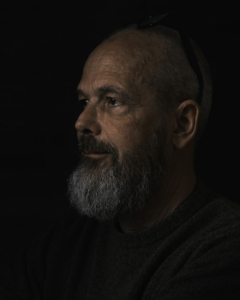 Meet Torben at the UIA:
Meet Torben at the UIA:5 July at 10:30
Science Track – Design for Inclusivity: Debate Session
Bella Center C1M2
Thomas Bo Jensen
Thomas Bo Jensen is professor of architecture and head of research at Aarhus School of Architecture – and special advisor to the UIA Scientific Committee.
Thomas’ research unfolds at the intersection between the natural, the cultural and the tectonic and aesthetic aspects of the materials of architecture, investigated through tectonic principles and expressions, as well as through the poetic imagination connected to the material’s presence and origin.
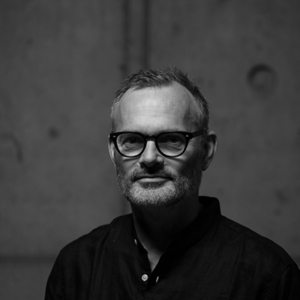
From a profound interest in the material of brick, his research has resulted in a Ph.D. dissertation about the structural and ornamental powers of brickwork in the 1920’s, followed by three monographs on some of the most distinguished 20th century Danish masters of brickwork: P.V. Jensen-Klint, Inger & Johannes Exner and Per Kirkeby. Thomas is currently leading the research project Material Imagination – reconnecting with the matter of architecture, counting 7 researchers from Aarhus School of Architecture and material researchers from other universities such as Virginia Tech, University of Michigan, Bartlett School of Architecture and Royal Danish Academy. In bonding our imagination directly with matter, while also confronting new digital technologies, this project challenges overly pragmatic and unreflective solutions within current architectural practice.
July 4 at 15:15
Next Gen: Turning the Tables – Enabling Young Voices in the Green Transition
Bella Center C1M5
Kristine Leth Juul
Meet vice-chancellor Kristine Leth Juul at the UIA in a very exiting debate about rebuilding Ukraine.
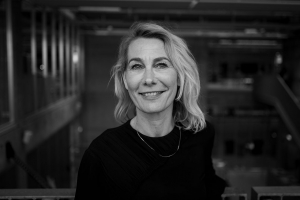 Meet Kristine at the UIA:
Meet Kristine at the UIA:3 July at 15:45
Reconstruction of Ukraine – The Needs and Contributions
Bella Center B1M2
Ruth Baumeister
Ruth Baumeister – member of the UIA Scientific Committe, Design for Inclusiviity – is an architect, historian, researcher and writer, specializing in the post-war European avant-gardes in architecture and art. Her recent research interests include gender studies, work-futures, activism and civil disobedience in architecture. Since 2014, she holds the professorship (MSO/Associate) of architecture history and theory at Aarhus School of Architecture.
Ruth received a PhD in architecture history from TU Delft with a thesis on the Danish Situationist International artist Asger Jorn´s concept of architecture. She has taught at the TU Delft, Bauhaus-University in Weimar, the Willem de Kooning Academy in Rotterdam and held the position of a visiting professor at the University of Cagliari, in Italy. Her research on Scandinavian modernism, the 1920s avant-gardes and globalization in architecture and has been published internationally in eight languages:
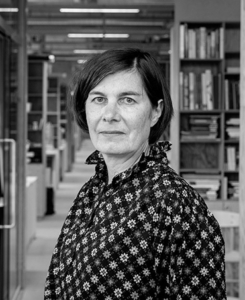
3 July at 11:15
Science Track – Design For Inclusivity: Welcome / Introduction
Bella Center B4 M7-8
4 July at 15:15
Science Track – Design For Inclusivity: Gender
Bella Center B4 M7-8
4 July at 16:20
Design For Inclusivity: Gender: Debate
Bella Center B4 M7-8
4 July at 10:30
CAFx International Manifesto Relay 2023
Bella Center C1M1
5 July at 10:30
Science Track – Design for Inclusivity: Debate Session
Bella Center C1M2
Panel Chairs Magda Mostafa and Ruth Baumeister will discuss the considerations that have shaped their work developing the Design for Inclusivity Science Track panel during the past two years. The session will also be an introduction to the programme and Session Chairs of the coming three days of paper presentations.
More info via UIA mobile app
https://4oy9t.app.link/?event=63ec9deb9b59fba094cc40b3&object=647601e7e80d4955d3881c95
Lotte Bjerregaard Jensen
Lotte has chaired a design engineering program at a high ranked department of civil engineering for 14 years. She taught courses at both undergraduate and graduate level and conducted supervision of PhD and Post Docs.
 She has been a guest professor at GUT Gdansk PL, University of Kentucky and visiting scholar at Pennsylvania State University USA. Her research in adaptive reuse, (+ urban mining and design for disassembly) is now taking place at the School of Architecture in Aarhus, where she is professor MSO.
She has been a guest professor at GUT Gdansk PL, University of Kentucky and visiting scholar at Pennsylvania State University USA. Her research in adaptive reuse, (+ urban mining and design for disassembly) is now taking place at the School of Architecture in Aarhus, where she is professor MSO.
July 3 at 15:45 (speaker)
Dynamic Capabilities – why we need to change how, who and what we teach
Bella Center B3 M1-2
5 July at 15:15 (chair)
Next Gen: Educating for a Sustainable ‘Now’ – Sustainability Curriculum Workshop for Students and Newly Graduated (#2)
Bella Center C1M4
Marie Frier Hvejsel
Marie Frier Hvejsel is Professor at Aarhus School of Architecture and President IASA, International Association of Structures and Architecture.

4 July at 10:45
Individual Actions in Collective Processes and Forms?: Collaboration for change across education, practice, and public debate
Bella Center B5 M1-2
The diversity of UN’s 17 Sustainable Development Goals (SDG’s) unfolds a series of intertwined environmental, social, and economic imbalances calling upon us to succeed in activating our individual competences and perspectives in partnerships for change. This argumentative essay serves as a mutual self-reflection towards this end, aimed at supporting identification of resourceful individual action in partnership across each of our respective fields of action; in architectural education, practice, and public debate. Motivated by a re-reading of Fumihiko Maki’s investigations in collective form (2008 [1964]), the paper identifies a correspondence between the multidimensional challenges reflected in the SDG’s and Maki’s call for collective forms of architecture.
Consequently, the paper scrutinizes collective processes for collective forms by proposing a translation from ‘form’ to ‘process’ in Maki’s original definition of collective form. Doing so, we can observe that investigation into the collective process is important because it forces us to reexamine the entire theory and vocabulary of architecture, the one of single authorship ((Maki 2008 [1964] p.57) translated by the authors). Hence, through translation we uncover a critical linkage between the current quest for accommodation of plural competences within the architectural process and the changes that architecture must necessarily undergo as a physical form to support viable change of the built environment. In conclusion the paper discusses the implications hereof for our actions in each of our individual contexts.
Alicia Lazzaroni
Alicia Lazzaroni is Teaching Assistant Professor at Aarhus Architecture School, Denmark and co-founder of the design collaborative Animali Domestici, and she was previously an instructor and year 3 coordinator at INDA, Chulalongkorn University in Bangkok, Thailand. With an interest in ecology and post-anthropocentric approaches, she has been investigating alternative inclusive assemblages of users and materialities, approaching crafting as a creative process with “ecosystemic” implications.
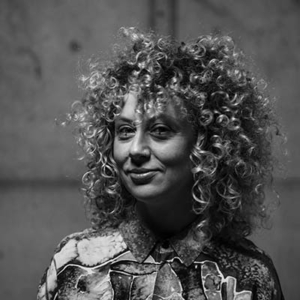
4 July at 14:15
Hardware Stories. DIY practices as more-than-human material activism
Bella Center B4 M1-2
In relation to an understanding of the symbiotic nature of living organisms, the project “Hardware Stories” is presented as a counternarrative to modernist hygienist standardization. It is a set of diegetic prototypes of construction elements, with relative manufacturing and maintenance tools, and is showcased through a floor component. This work questions how much the mechanism of production of architectural construction materials, with its quality control mechanisms and the economic scale that its implementation requires, actually prevents any form of alternative approaches.
The project proposes to consider DIY practices as a form of mundane resistance that can empower multiple actors as a practice of material activism. Through the description of material sourcing, properties, manufacturing processes, and installation, this visual essay aims to explain how these enable to conceive different relationships of cohabitation that are critically framed through the concept of “domestication-as-riwilding”, introduced by anthropologist Anna Tsing.
More info via UIA mobile app
https://4oy9t.app.link/?event=63ec9deb9b59fba094cc40b3&object=647613064a2a9ff2c92302c0
Antonio Bernacchi
Antonio Bernacchi is Teaching Assistant Professor at Aarhus Architecture School, Denmark and co-founder of the design collaborative Animali Domestici, and he was previously an instructor and year 4 coordinator at INDA, Chulalongkorn University in Bangkok, Thailand. His research and teaching interests span from the role of manufactured imaginaries to the architectural side of the so-called ‘critical speculative design’ and design fiction.

4 July at 14:15
Hardware Stories. DIY practices as more-than-human material activism
Bella Center
In relation to an understanding of the symbiotic nature of living organisms, the project “Hardware Stories” is presented as a counternarrative to modernist hygienist standardization. It is a set of diegetic prototypes of construction elements, with relative manufacturing and maintenance tools, and is showcased through a floor component. This work questions how much the mechanism of production of architectural construction materials, with its quality control mechanisms and the economic scale that its implementation requires, actually prevents any form of alternative approaches. The project proposes to consider DIY practices as a form of mundane resistance that can empower multiple actors as a practice of material activism. Through the description of material sourcing, properties, manufacturing processes, and installation, this visual essay aims to explain how these enable to conceive different relationships of cohabitation that are critically framed through the concept of “domestication-as-riwilding”, introduced by anthropologist Anna Tsing.
More info via UIA Mobile App:
https://4oy9t.app.link/?event=63ec9deb9b59fba094cc40b3&object=647613064a2a9ff2c92302c0
Stine Dalager Nielsen
Stine Dalager Nielsen Architect MA, MSc, PhD-fellow, Aarhus School of Architecture, Lab-03 Radical Sustainable Architecture Stine Dalager Nielsen, Architect MA, MSc, ARB, is a Danish architect and PhD-Fellow with the Aarhus School of Architecture. Before starting her PhD, she spent ten years in practice as a conservation architect in London, England, Copenhagen, Denmark and Tranquebar, India, with practices such as Avanti Architects (UK), Feilden & Mawson (UK) and Elgaard Architecture (DK). Projects include high-profile conservation projects in Whitehall and The Natural History Museum in London and transformation- and design schemes for the Jewish Museum in Denmark, the Roskilde Cathedral School and parts of the royal estates in Denmark.
Stine’s research interests and PhD regard a relational understanding of building as a practice and object. With this, the thesis argues that when referencing the growing relational thinking within sustainability discourse, sustainable building cannot be a question of quantifiable solutions and material results only but must also address intrinsic aspects of building – the connective tissue which interrelates the human, the material and the environmental into practice and structure, which have done so for centuries. Her thesis explores potential overlaps from the perspective of self-build practices in which anthropological methods form a practice-based view of sustainable architecture rather than focusing on fabric only.
 Meet Stine at the UIA:
Meet Stine at the UIA:5 July at 08:30
Science Track – Design for Resilient Communities: The Global Crisis and Designing Resilience – Part 2 (chair)
Bella Center B4 M3-4
5 July at 09:45
Design for Resilient Communities: The Global Crisis and Designing Resilience – Part 2: Debate (chair)
Bella Center B4 M3-4
3 July at 15:54
The Unsustainable Practice – the oratorio of a house
Climate change, the global pandemic and ensuing political upheavals have laid bare systemic inequalities across the world. Kate Raworth’s Doughnut Economics suggests a socio-economic-environmental pathway to sustainability. Can site-specific examples offer lessons for education, research, professional practice, and policy that will encourage better Design for Resilient Communities? How could global initiatives, such as the SDGs help address regional disparities and specificities?
Jonathan Foote
Jonathan Foote, Ph.D, is an architect and Associate Professor at Aarhus School of Architecture, Denmark. He focuses on the relations between materials and architectural practice in historical and contemporary contexts, with publications on the drawings of Michelangelo Buonarroti, Francesco Borromini, and Sigurd Lewerentz. The intersections between the workshop, teaching and academic work have led to a number of international exhibitions and externally funded creative projects.

4 July at 13:32
Post-extractive Material Practice: the case of quarried stone
Bella Center B4 M1-2
Humans have extracted materials from the earth for millennia, but only recently have our extraction practices had planetary consequences. The scale, intensity and violence of current practices is theorized as ‘extractivism’, and as a number of recent publications and exhibitions have made clear, a post-extractive future is urgently needed. How and under what conditions can we address such an imperative? Is it possible to aim toward a pre-modern notion of extraction as a custodial practice of care in relation to earth’s resources? Following recent projects to re-introduce load-bearing stone, known loosely as ‘The New Stone Age’, this argumentative essay explores a post-extractive future through the case of quarried stone. We see it as a poignant case of how we might move from extractivism to a more custodial form of extraction, and showing the potential to reduce our need for materials such as steel, concrete and wood, industries that are driven in large part by extractivist principles. Based on Timothy Morton’s notion of ecological thought, we argue for a new way to understand stone extraction as an ecology of interconnections. On the one hand, great potential emerges in the circularity and reversibility of stone construction, along with its extremely long life cycle, and on the other we see a strong potential to recover the historical connections between architecture and the anthropogenic landscapes of stone extraction. In the end, we position the issue of material extraction within its multifaceted entanglements of landscape, construction, socio-cultural and economic contexts
More info in UIA mobile app:
https://4oy9t.app.link/?event=63ec9deb9b59fba094cc40b3&object=647611f1bee3c2acbc6d77de
Urszula Koźmińska
Urszula Koźmińska is PhD and associate professor at Aarhus School of Architecture. Her research field is
CIRCULARITY / ECOLOGICAL, POST-EXCTRACTIVE AND LIFECYCLE APPROACH with focus on ecological and lifecycle thinking in architecture, ecosystemic understanding of interconnected dependencies, circular design process and construction, circular architecture (designing with reused materials, for disassembly and future reuse, reversibility, materials, building systems, aesthetics).
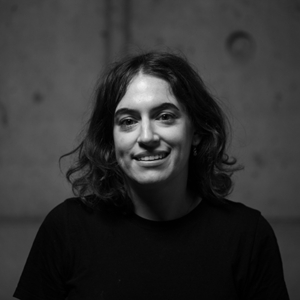
4 July at 13:32
Post-extractive Material Practice: the case of quarried stone
Bella Center B4 M1-2
Humans have extracted materials from the earth for millennia, but only recently have our extraction practices had planetary consequences. The scale, intensity and violence of current practices is theorized as ‘extractivism’, and as a number of recent publications and exhibitions have made clear, a post-extractive future is urgently needed. How and under what conditions can we address such an imperative? Is it possible to aim toward a pre-modern notion of extraction as a custodial practice of care in relation to earth’s resources?
Following recent projects to re-introduce load-bearing stone, known loosely as ‘The New Stone Age’, this argumentative essay explores a post-extractive future through the case of quarried stone. We see it as a poignant case of how we might move from extractivism to a more custodial form of extraction, and showing the potential to reduce our need for materials such as steel, concrete and wood, industries that are driven in large part by extractivist principles. Based on Timothy Morton’s notion of ecological thought, we argue for a new way to understand stone extraction as an ecology of interconnections. On the one hand, great potential emerges in the circularity and reversibility of stone construction, along with its extremely long life cycle, and on the other we see a strong potential to recover the historical connections between architecture and the anthropogenic landscapes of stone extraction. In the end, we position the issue of material extraction within its multifaceted entanglements of landscape, construction, socio-cultural and economic contexts.
More info via UIA mobile app
https://4oy9t.app.link/?event=63ec9deb9b59fba094cc40b3&object=647611f1bee3c2acbc6d77de
Nikola Gjorgjievski
Nikola Gjorgjievski is a researcher and teacher at Aarhus School of Architecture with special knowledge of sustainability, climate change and biodiversity.
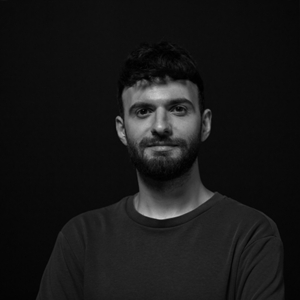
Meet Nikola and co-authors Jonathan Foote and Urszula Kozminska at the UIA:
4 July at 13:32 – 13:44
Post-extractive Material Practice: the case of quarried stone
Bella Center B4 M1-2
Humans have extracted materials from the earth for millennia, but only recently have our extraction practices had planetary consequences. The scale, intensity and violence of current practices is theorized as ‘extractivism’, and as a number of recent publications and exhibitions have made clear, a post-extractive future is urgently needed. But how and under what conditions can we address such an imperative? Is it possible to aim toward a pre-modern notion of extraction as a custodial practice of care in relation to earth’s resources?
Following recent projects to re-introduce load-bearing stone, known loosely as‘The New Stone Age’, this argumentative essay explores a post-extractive future through the case of quarried stone. We see it as a poignant case of how we might move from extractivism to a more custodial form of extraction, and showing the potential to reduce our need for materials such as steel, concrete and wood, industries that are driven in large part by extractivist principles. Based on Timothy Morton’s notion of ecological thought, we argue for a new way to understand stone extraction as an ecology of interconnections. On the one hand, great potential emerges in the circularity and reversibility of stone construction, along with its extremely long life cycle, and on the other we see a strong potential to recover the historical connections between architecture and the anthropogenic landscapes of stone extraction. In the end, we position the issue of material extraction within its multifaceted entanglements of landscape, construction, socio-cultural and economic contexts.
Heidi Merrild
Heidi Merrild has a Master in energy and Green Architecture and is completing her industrial PhD at Aarhus School of Architecture.
Heidi Merrild challenges the foundations of architecture in her talk on Explore Reversible Tectonics (RT), a new paradigm for circular thinking in the built environment.
Through integrating ecological theories and reinterpreting premodern techniques, Merrild aims to cultivate a new culture of environmental architecture. She argues how reversible tectonics can redefine our relationship with nature and create a harmonious balance.
Join this talk and delve into the transformative potential of architecture within Earth systems.
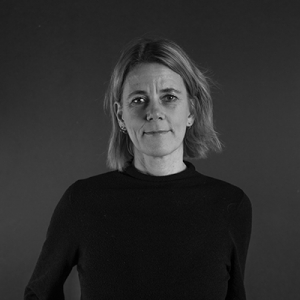
July 4 at 15:30 – 16:00
Reversible tectonics (RT) – towards a new paradigm for circular thinking in the built environment
Bella Center, BLOX Pavillon
Birgitte Eybye
Birgitte T. Eybye Assistant professor, cand. arch., Ph.D. Aarhus School of Architecture Exners Plads 7 DK-8000 Aarhus C Birgitte has a master in architectural conservation and did her doctoral thesis within the field of preindustrial vernacular architecture and sustainability. Her special fields of interest are architectural heritage, conservation and, connections between sustainability and heritage buildings. She teaches architectural conservation at master’s level.
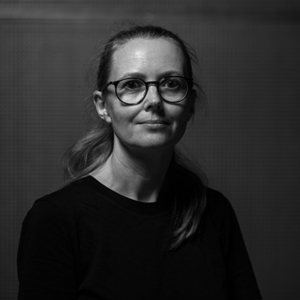
5 July at 09:08
Reuse in Danish vernacular architecture: examples and their future versatility
Bella Center
With climate change, there is an urgent need to reduce CO2 emissions, for instance the ones related to the building sector. Contemporary building has developed into having a larger climate impact in the construction phase than in the operational phase which highlights the necessity to rethink resources. At the same time, research into connections between sustainability and Danish preindustrial vernacular architecture shows a widespread reuse of building materials and components. As a logical consequence, this paper investigates vernacular approaches to resource management in the form of reuse with a view to discuss the versatility of such in future building.
The first part of the paper explores examples of reuse in preindustrial vernacular architecture. To achieve this objective, the paper initiates the methodic and analytical framework. Next, a literature review is presented to provide general information on reuse in architectural heritage and to focus the two case studies. Through the case studies, examples of reuse and recycling are identified and outlined. The second part of the paper discusses the extent to which the vernacular approaches to reuse have the potential to contribute to future sustainable building and the possible challenges. Primary findings concern the vernacular perception of buildings as resource banks, whereas impediments to extensive reuse are of legislative, technical, toxicological and socio-economical kind.
More details in UIA mobile app
https://4oy9t.app.link/?event=63ec9deb9b59fba094cc40b3&object=64760cf77e3f7854594dbfab
Elvira Ofelia Bergman-Coates
Elvira Ofelia Bergman-Coates is a hands-on architect/student who started building full scale houses alongside her architectural studies at Aarhus School of Architecture. She has spent the last few years building what she drew for herself and guiding others along similar paths, in the pursuit of first trying her own designs, and then offering the findings to others. In using herself as a guinea pig, she challenges Scandinavian presumptions on square meter needs, insisting on living (with her family of 4) on 28m2 since 2018. Stressing that we in our part of the world need to consume less and reduce our gluttony for ressources; smaller builds is a way to achieve that as they require less material.
Living with less room further equals only keeping things that actually serve a function. Elvira’s motto is quality before quantity; if you only need a few m2 of any material, the price of good quality might be affordable. If your living space is too small for all those nonsense things, you can spend your time on anything but choosing between 176 T-shirts. Her train wagon Tiny House project led Elvira to like minded builders at Grobund Djursland, where she began building her latest project; a self built villa of 78m2. This was broadcasted on Danish national TV, made a front page and feature in the magazine Bolius, and participated in a fashion design campaign for Minimum Fashion. Using her manner of living and building to showcase another take on the role of an architect, Elvira also has been lecturing at events like Tiny House Forum in Sweden, the New Rural Living conference of the Danish Association of Architects, the Building Festival (DK) and Grobund Højskole (DK). Not every architect needs to be a handywoman/man but in taking part of every step of her architecture -as the person executing it- Elvira claims that close bonds between the different trades in the building industry are crucial and needs to be amplified. Passing forward methods to build small, contemplated and bio based throughout and beyond all building proffessions. Learn more about Elvira and her projects on Instagram and LinkedIn.
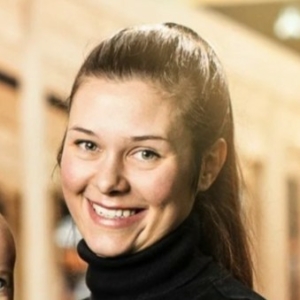
4 July at 15:15
Next Gen: Turning the Tables – Enabling Young Voices in the Green Transition
Bella Center C1M5
5 July at 13:15
Next Gen: Transition into Sustainability Practices – The First Years (#1)
Bella Center C1M4
5 July at 15:15
Next Gen: Educating for a Sustainable ‘Now’ – Sustainability Curriculum Workshop for Students and Newly Graduated (#2)
Bella Center C1M4
More info via UIA mobile app:
https://4oy9t.app.link/?event=63ec9deb9b59fba094cc40b3&object=640b22ff8257dfb58f1221b8
Soo Jung Ryu
Soo Jung Ryu is a researcher from New Zealand with a PhD at the Aarhus School of Architecture in Denmark, researching the potentials of seaweed in contributing to coastal adaptation in light of sea-level rise. She holds a double Masters in Architecture from Victoria University of Wellington and Masters in Science (Urban, Energy and Environmental Planning) from Aalborg University. Prior to undertaking research, she has worked for various architectural for practices in New Zealand, South Korea and the UK for seven years.
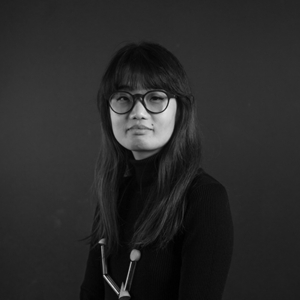
4 July at 10:30
Science Track – Design For Inclusivity: The Non-Human
Bella Center B4 M7-8
4 july at 11:34
Design For Inclusivity: The Non-Human: Debate
Bella Center B4 M7-8
4 July at 14:08
Urban Seascaping with seaweed – Multiscalar Network Mapping as a framework for design analysis and projection of marine nature-based solutions for coastal adaptation and restoration proposals in Vejle, Denmark
Bella Center B4 M7-8
The idea that nature exists as something wild outside of human culture is outdated, but there is a lack of awareness in current planning practice when it comes to the importance of non-human actors, such as animals, trees, etc. How can we think of spaces as something ´more-than-human´ and by doing so, aim at including unintended aspects of the built environment? How can architects contribute to create an awareness to the needs of non-human actors not only on the level of the discipline´s critical role in urban ecology, but also by including nonhuman´s subjectivities in the built environment?
More info via UIA mobile app:
https://4oy9t.app.link/?event=63ec9deb9b59fba094cc40b3&object=6475e1854a2a9ff2c922405a
At skabe et inkluderende bygget miljø, som alle mennesker har mulighed for at være en del af, er en af de største udfordringer for arkitekter fremover. At forudse og anerkende behovene hos en mangfoldig befolkning, med forskellig baggrund og med forskellig identitet, kræver en dyb forståelse af, hvordan mennesker fungerer, hvordan det byggede miljø gribes an, og hvordan man gennem arkitektoniske greb kan skabe tilgængelighed for alle.
Verdenskongressen er opbygget med seks videnskabelige spor, der samlet repræsenterer de 17 verdensmål. Lektor Ruth Baumeister fra Arkitektskolen Aarhus har sammen med Magda Mostafa udviklet programmet for panel 5, Design for Inclusivity. De har lagt et stort arbejde i at udvikle konkrete metoder til at arbejde med tilgængelighed og inklusion – ligesom involveringen af deltagere fra et globalt vidensfelt har understøttet forberedelserne til en kongres, der i format og indhold lever op til egne principper.
På UIA kongressen vil stemmer fra studerende og unge arkitekter udgøre en vigtig del af det omfattende program. Fra Aarhus Arkitektskole vil mange af vores studerende være med på summer academy, deltage som tilskuere og som aktive i paneldebatter og udstillinger.
Studerende Elvira Bergman-Coates, Mathias Nymand Marquard og Helene Søndergaard Jensen er alle medlemmer af UIAs Next Gen Committee, der har udviklet sessioner kurateret af studerende for studerende og nyuddannede. Helene og Mathias overtager skolens Instagram – følg med når de deler indtryk og oplevelser fra Kongressen.
I Arkitektforeningens lokaler kan man opleve en udstilling med seks udvalgte afgangsprojekter fra Arkitektskolen Aarhus og Det Kongelige Akademi, der inspirerer til fælleskab, forbundethed og bæredygtighed. Læs mere på Arkitektforeningens hjemmeside.
Arkitektforeningen
Åbenrå 34
København K
Relateret
MÅSKE ER DU OGSÅ INTERESSERET I DETTE

 PARET D’ESQUERDES (CRACKED WALL)
PARET D’ESQUERDES (CRACKED WALL)